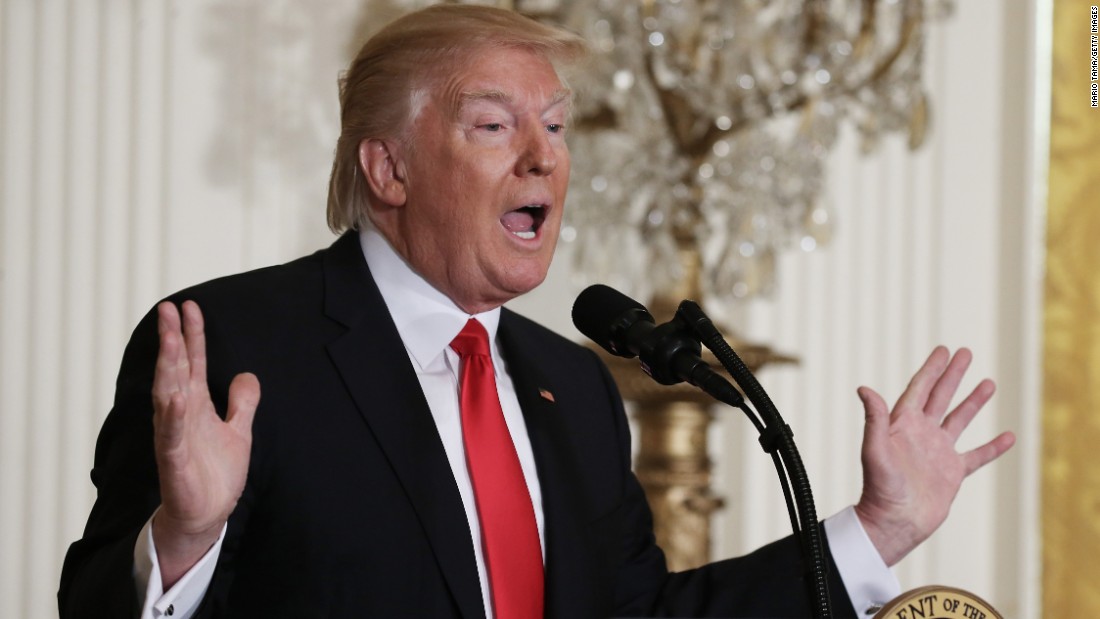Trump Press Conference Characteristics

Donald Trump’s press conferences were a defining feature of his presidency, often characterized by their unconventional style, combative tone, and focus on his own agenda. These events frequently deviated from the traditional format of presidential press conferences, sparking controversy and raising questions about their impact on public discourse and media coverage.
Style and Tone
Trump’s press conferences were often characterized by a highly informal and theatrical style. He frequently used colorful language, made personal attacks on his critics, and engaged in extended monologues, often veering off-topic. His confrontational tone, marked by interruptions, accusations, and personal insults, created a tense and adversarial atmosphere, setting him apart from his predecessors.
Content and Focus
Trump’s press conferences often focused on his own agenda, emphasizing his accomplishments and attacking his opponents. He frequently used these events to promote his policies, respond to criticisms, and shape public opinion. His speeches were often filled with exaggerated claims, unsubstantiated allegations, and conspiracy theories, prompting fact-checking efforts and raising concerns about the spread of misinformation.
Comparison with Previous Presidents
Compared to his predecessors, Trump’s press conferences were significantly more contentious and less focused on traditional presidential communication. While previous presidents often used press conferences to inform the public about important issues and answer questions from reporters, Trump frequently used these events to advance his own agenda and attack his critics. His confrontational style and disregard for established norms led to a more polarized and divisive political climate.
Impact on Public Opinion and Media Coverage
Trump’s press conferences had a significant impact on public opinion and media coverage. His unconventional style and provocative rhetoric often dominated the news cycle, fueling public debate and controversy. His attacks on the media and his tendency to spread misinformation contributed to a climate of distrust and polarization, making it more difficult for the public to discern fact from fiction.
The Role of Media in Trump Press Conferences

Donald Trump’s presidency was marked by a tumultuous relationship with the press, characterized by both intense conflict and occasional moments of cooperation. His press conferences often became platforms for highly charged exchanges, highlighting the deep divisions between the administration and the media. This dynamic had a significant impact on the coverage of his presidency and the public’s perception of his administration.
Trump’s Relationship with the Press, Trump press conference
The relationship between Trump and the press was defined by a constant state of tension. Trump frequently attacked the media, labeling them “the enemy of the people” and accusing them of spreading “fake news.” He often held rallies where he would publicly berate reporters, fueling a climate of animosity. This hostility towards the media was evident in his press conferences, where he would often engage in heated exchanges with reporters, interrupting them, calling them names, and refusing to answer their questions.
- The “Fake News” Narrative: Trump repeatedly accused the media of spreading false information, using the term “fake news” to discredit any reporting that was critical of him or his administration. This rhetoric served to undermine public trust in traditional media outlets and create a sense of distrust in the information they disseminated.
- Targeting Specific Reporters: Trump often singled out reporters he perceived as hostile, publicly criticizing them and even banning them from his events. This tactic aimed to intimidate the press and discourage critical reporting.
- Refusal to Answer Questions: Trump frequently refused to answer questions from reporters, particularly those he considered unfavorable. He would often dismiss their inquiries with dismissive gestures, insults, or by simply walking away from the podium.
Despite the animosity, there were also instances of cooperation between Trump and the press. He occasionally engaged in friendly interactions with reporters, offering insights into his decision-making process or providing access to his administration. However, these moments were rare and often overshadowed by the more frequent confrontations.
Trump press conference – You know, Trump’s press conferences were like a reality show, but instead of contestants, it was reporters trying to get a word in edgewise. It was all about the drama, the yelling, and the “fake news” accusations. Remember that whole “Sept 10 debate” thing?
It’s supposed to be a turning point in history , but I’m pretty sure Trump’s press conferences were more entertaining. Anyway, it was all a big circus, and I’m just glad it’s over.
Remember those Trump press conferences? You know, the ones where he’d rant about the “China virus” and claim it was all a hoax? Well, it turns out the World Health Organization (WHO) has a lot to say about who COVID-19 actually is and how it spread.
But hey, who needs facts when you’ve got a microphone and a Twitter account, right?
